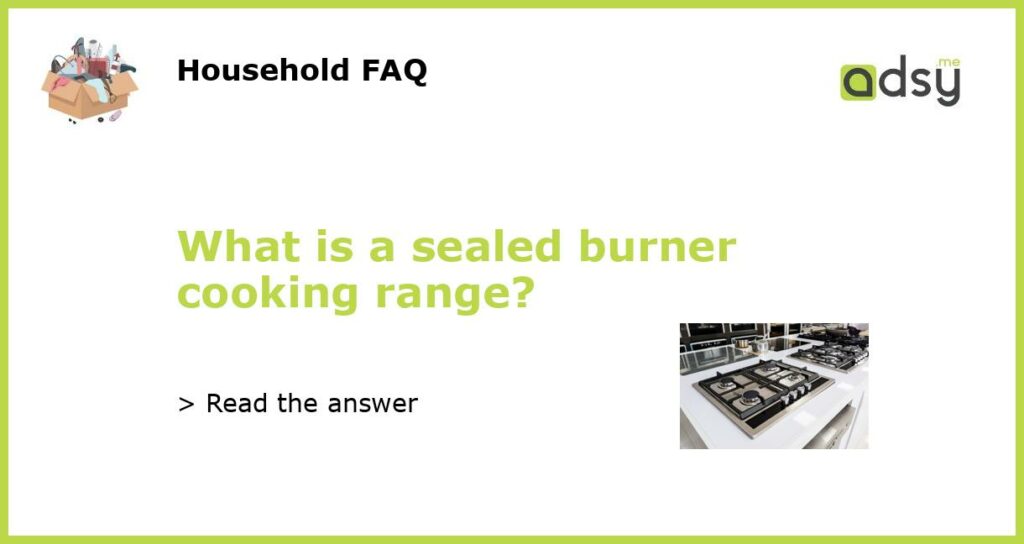What is a Sealed Burner Cooking Range?
A sealed burner cooking range is a type of stove that has burners that are sealed off from the rest of the stove. This means that there is no open flame exposed to the air in the kitchen or in the cooking environment. Instead, the flame is contained within the burner and is directed towards the cookware on the stove.
How Does a Sealed Burner Cooking Range Work?
A sealed burner cooking range works by using a sealed burner head that is attached to a gas or propane source. The burner head is typically made of aluminum or stainless steel and has small holes through which the gas or propane can flow. The gas or propane is ignited by a spark and the flames are directed upwards towards the cookware.
What are the Benefits of a Sealed Burner Cooking Range?
One of the main benefits of a sealed burner cooking range is that it is easy to clean. The sealed burner head prevents spills and debris from falling into the stove and burner, making it easier to wipe down and keep clean. Additionally, sealed burner cooking ranges are also more efficient than traditional open flame burners as they direct heat more directly towards the cookware and reduce the amount of heat lost to the air.
Where Can You Find Sealed Burner Cooking Ranges?
Sealed burner cooking ranges can be found at most home appliance stores and retailers. Some popular brands of sealed burner cooking ranges include GE, Kenmore, and Viking. Additionally, they can also be found online on websites like Home Depot, Lowe’s, and Amazon.
Are There Any Downsides to Using a Sealed Burner Cooking Range?
One potential downside to using a sealed burner cooking range is that they can be more expensive than traditional open flame burners. Additionally, they may take longer to heat up than traditional burners as the heat is directed more precisely towards the cookware. However, the benefits of a sealed burner cooking range often outweigh these potential downsides, making them a popular choice among home cooks and professional chefs alike.






